I watched Pete Thorntons video of his friends ICE train on the rolling stock forum and when the video was over there was a suggestion of others on the side. I skipped the girl fighting fails video but clicked on this one and wow is that crane AWESOME! Check it out. I might have to get a Stainz and build this crane one day not to mention a fine ICE train like Pete’s friend has.
The crane is cool. I too might want to build one. I can see where LGB and others where G scale started used R1 curves. Everything is 2 axle. Not the North American (including Canada) norm.
Wow, that’s funky! Did you notice the driver’s hands stick out through an opening in the back wall of the cab, when he’s working the control levers?
Most unusual. What do you call such a creature?
I think the reaching thru the back wall was to set / apply the hand brake on the downhill run.
Burl Rice said:
Most unusual. What do you call such a creature?
Usually referred to as a crane locomotive. Common in the UK, although a wagon mounted version is obviously more flexible for maintenance. How about this one, built in 1950 for New Zealand ?

A few more here: http://www.notechmagazine.com/2010/05/crane-locomotives.html
I like the ones that use the chimney stack as a pivot:

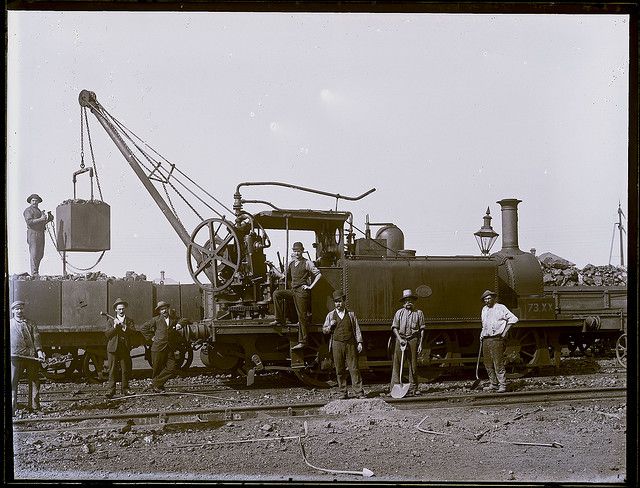
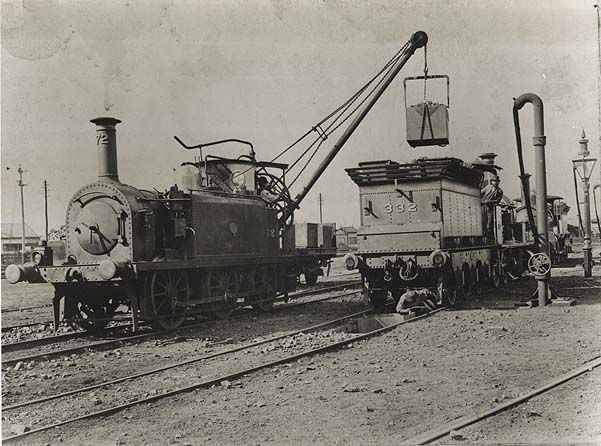
Very popular before cranes became larger and were then motorized.
When I researched cranes for loading locomotives on ships I saw many loco cranes in shipyards …
To me the most interesting feature of the crane that Todd posted is the massive size of the boom and it’s ridiculous shortness. It doesn’t appear to reach much more than a couple of feet past the coupler.
As can be seen in the pictures posted by Pete and John the booms are mostly a more usable length.
Its not the size, its how you use it.
That is cool, Todd!
Oh, here in YT’s suggestions is a different one which shows some closeups of the mechanism working.
Example from it, https://youtu.be/ZmMb0pThtck?t=4m11s
David Maynard said:
Its not the size, its how you use it.
Maybe in some things but not in crane booms(https://www.largescalecentral.com/externals/tinymce/plugins/emoticons/img/smiley-smile.gif)
WoW . . . . very interesting . . . thanks for posting . . . . . . (https://www.largescalecentral.com/externals/tinymce/plugins/emoticons/img/smiley-smile.gif)
Rick Marty said:
To me the most interesting feature of the crane that Todd posted is the massive size of the boom and it’s ridiculous shortness. It doesn’t appear to reach much more than a couple of feet past the coupler.
As can be seen in the pictures posted by Pete and John the booms are mostly a more usable length.
I suspect the biggest length issue is when does the loco start to tip. I’ve never seen any outrigger supports on one of these.
That is probably why the short boom. To keep the center of gravity within the footprint of the locomotive.

Above; looks like they chained them to the rails for stability… only this one so far.

Small pistons drives a crank to turn the gears.

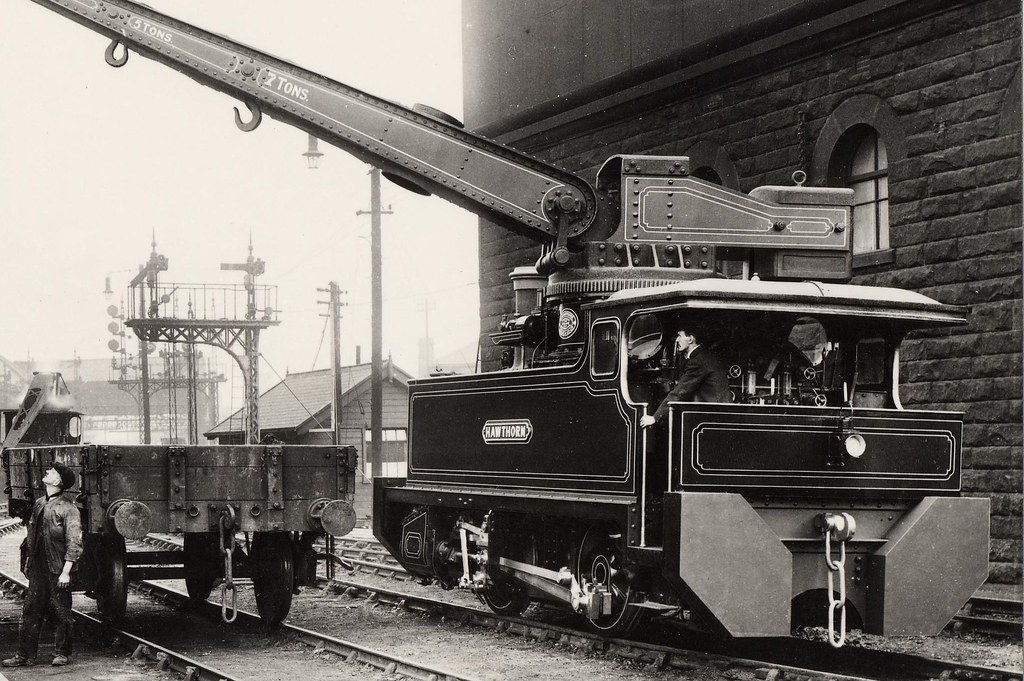
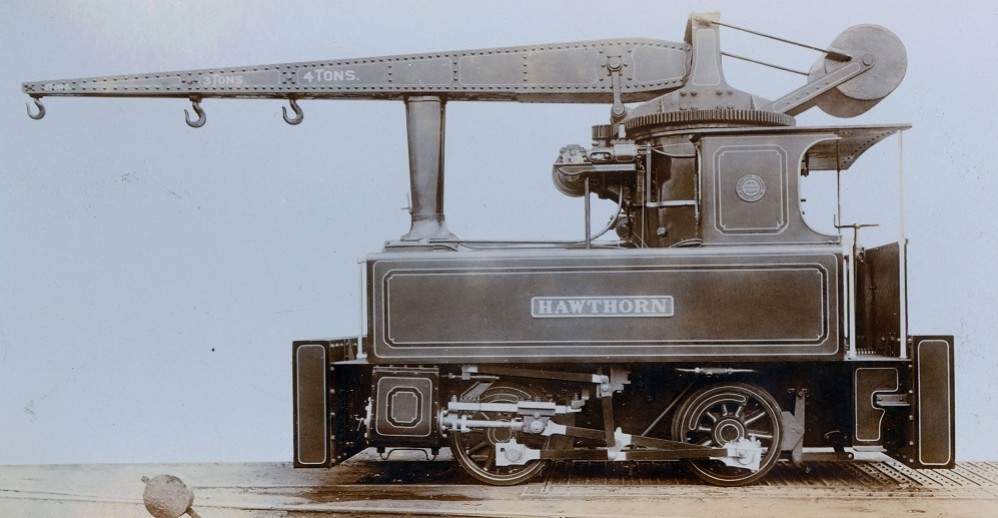
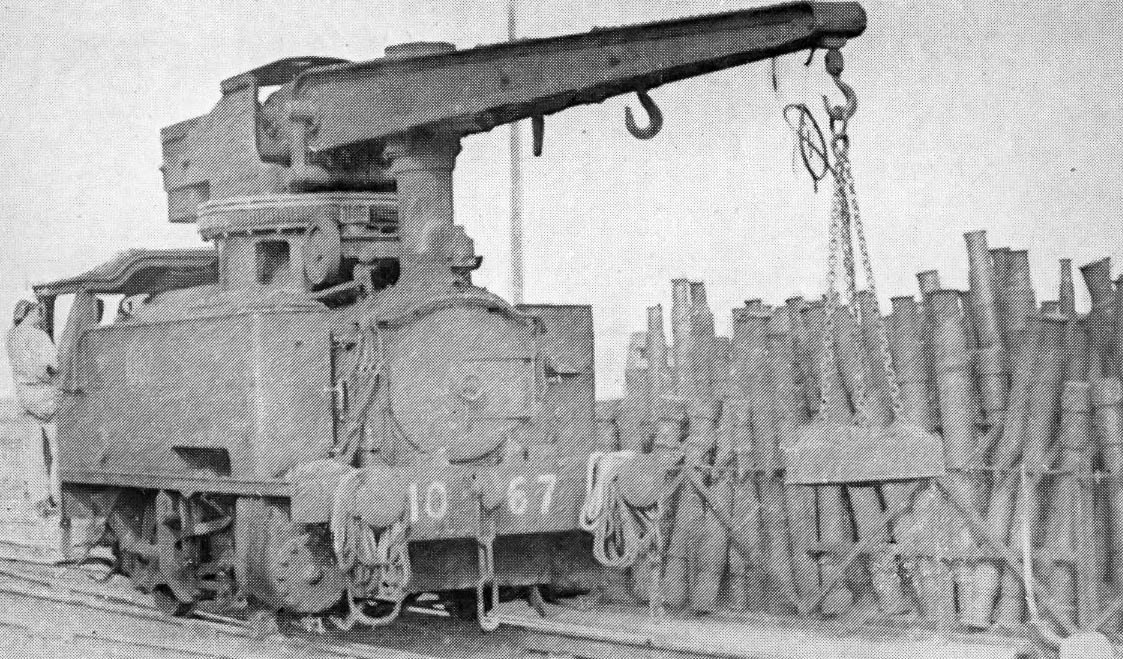
OH BOY these little cranes are TOO COOL ! Now I’m getting an itch that I just might have to scratch.
Thanks for posting those great photos John C. and Pete.
With some of those the way the crane pivots on the smoke stack is really interesting. It looks like the one in the video has enough clearance to swing over the stack.
Very interesting.
John Caughey said:
Above; looks like they chained them to the rails for stability… only this one so far.
I don’t think so. That chain hanging down is part of the 3-link chain coupling - it’s shown on some of your other photos in the center of the pilot/buffer beam. I think they must have relied on the weight of the water in the boiler.
This little loco is commonly referred to as the Dubs (its Glasgow based maker) crane tank (side water tank loco). A much loved and featured loco in the UK rail preservation press.
It’s home, The Foxfield Railway, features the steepest adhesion only worked gradient, at 1 in 19, in the UK. P-rincipally a home for small industrial locos, due to it’s associated colliery that the line linked to. It is also the home of the only surviving coaches and loco that were part of the North Staffordshire Railway that the line was originally part of. The trains are a spectacular sight when the “storm” the incline.
Pete Thornton said:
John Caughey said:
Above; looks like they chained them to the rails for stability… only this one so far.
I don’t think so. That chain hanging down is part of the 3-link chain coupling - it’s shown on some of your other photos in the center of the pilot/buffer beam. I think they must have relied on the weight of the water in the boiler.
Pete, it was the chain near the cylinder that appeared to be a possibility, not the coupling chains they all have.
That said I haven’t seen any tie downs elsewhere either.
John Caughey said:
Pete Thornton said:
John Caughey said:
Above; looks like they chained them to the rails for stability… only this one so far.
I don’t think so. That chain hanging down is part of the 3-link chain coupling - it’s shown on some of your other photos in the center of the pilot/buffer beam. I think they must have relied on the weight of the water in the boiler.
Pete, it was the chain near the cylinder that appeared to be a possibility, not the coupling chains they all have.
That said I haven’t seen any tie downs elsewhere either.
I don’t think the Dubs used any form of “tie downs” for stability. Just a low centre of gravity, a dirty great counterweight on the back end of the jib and a bit of care on how much load you put on it. I could be very wrong but there is nothing obvious on show If you overloaded it and it was tied to the tracks you’d just twsit and rip up the tracks. Although it is not apparent from the photos the crane has its own slewing engine and the boiler has no steam dome. It’s a quite unusual little prototype, or as has been said - cool.